Cuba Day 4 #822-#829 in Parque Nacional Cienaga de Zapata including the World’s Smallest Bird
We started Saturday morning with breakfast and then headed out at first light. On the bus ride to the first site, we encountered a mass of thousands of land crabs scuttling across the road. These were likely Gecarcinus ruricola. I would have liked to stop to look at them; but birds were the goal, not crustaceans, so we drove on past (and over) the crabs.
First stop was a bird blind where several dove species were feeding. I added #822 Blue-headed Quail Dove and #823 Key West Quail Dove, but missed Gray-headed Quail Dove because there were simply too many people in the group for everyone to see at once. The trip was overly large at 17 people including guides; it should have been half the size it was. :-(
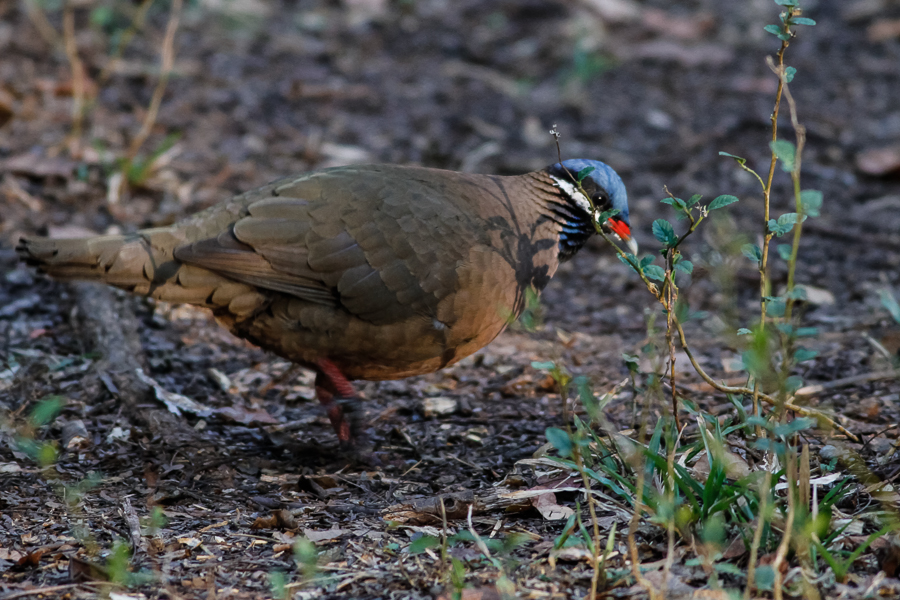
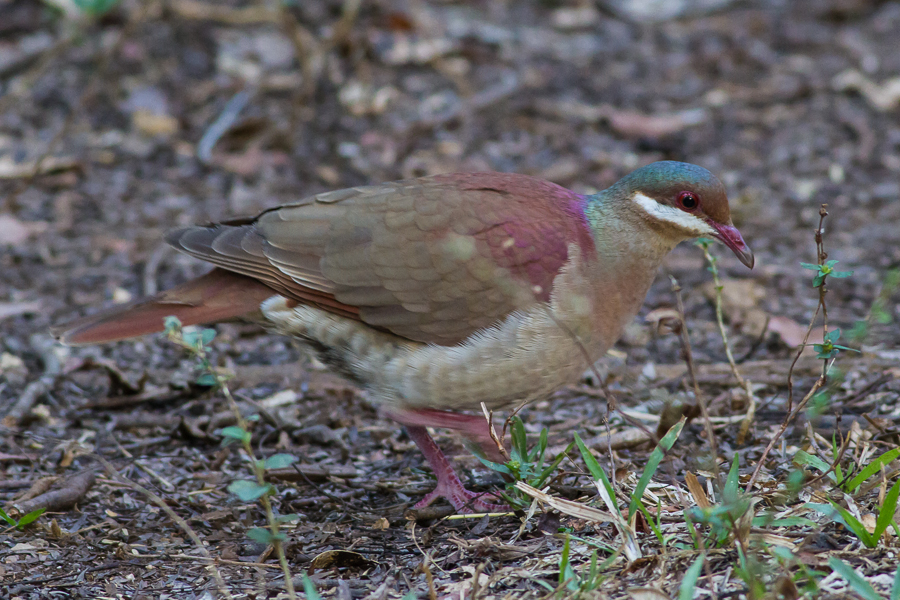
After an hour or so at the blind, we wandered off into the woods and heard (but I never saw) Cuban Vireo. I thought about sticking around to try to see it, but decided to catch up to the leaders instead, which was the right choice since a little further down the road we found #823 Great Lizard Cuckoo while several folks were still trying to get their binoculars on the Vireo.
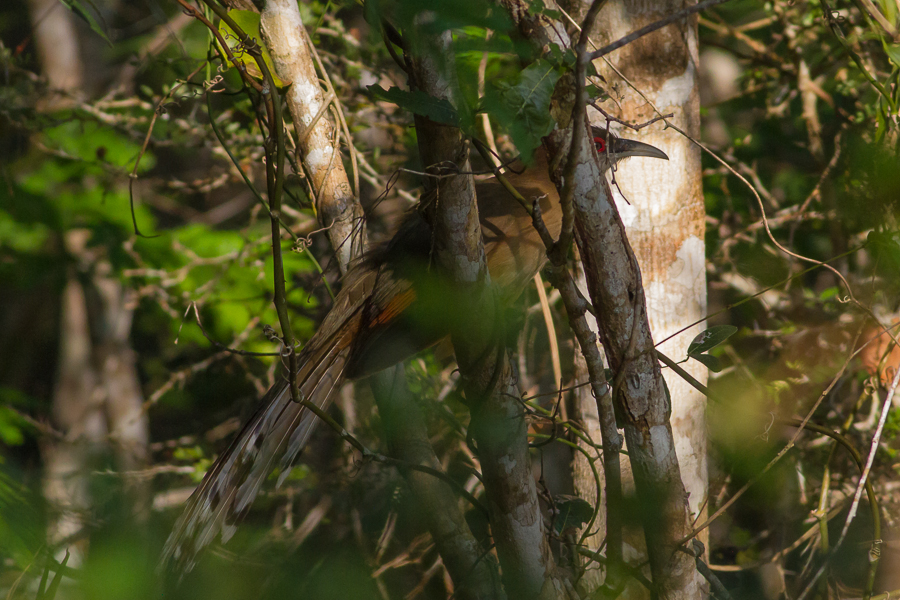
Next we went a little deeper, and the leaders started scratching and knocking on dead palm trees to try to wake up a Bare-legged Owl. Disturbing owls makes me a little uncomfortable. I’m not sure we need to see it that badly. Nothing happened at the first two trees, but at the third this little fellow, #825, popped right up:
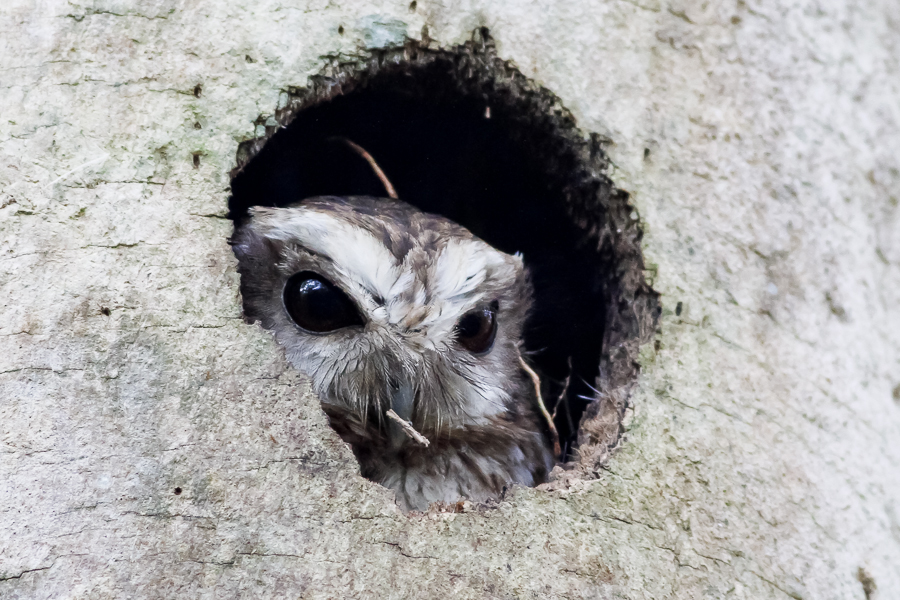
On the way back, we added #825 Cuban Parrot and flyover Cuban Parakeets, #826.
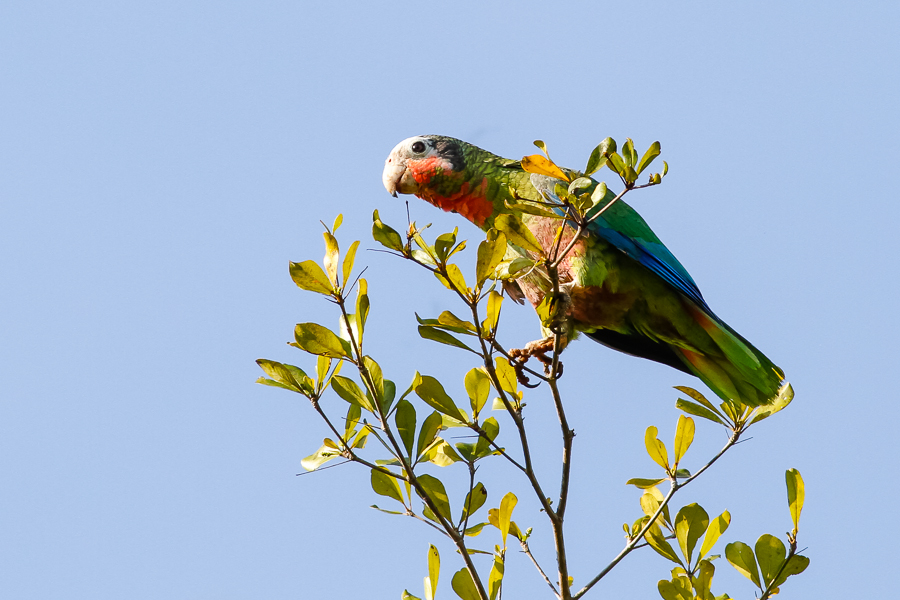
We were about to load on the bus when someone spotted a Bee Hummingbird, #827 perched on a wire across the road, so we trekked over there to see it. This is the world’s smallest bird and perched cooperatively for us for quite a while, occasionally moving from one perch to another.
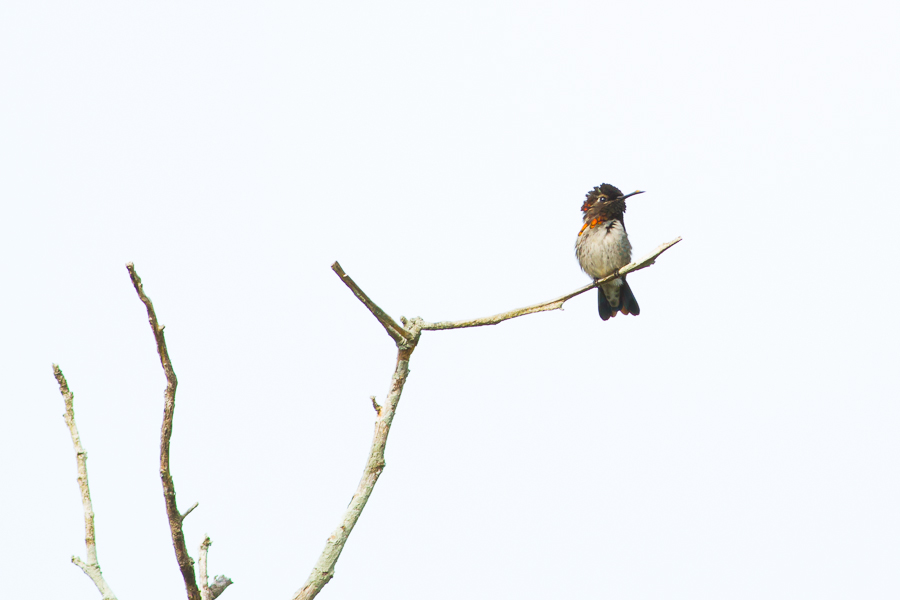
Once we got back on the bus we began hopping down the road, stopping every kilometer or so to see what we could see. At one stop the leaders started rapping and scratching on dead palms again, and once again out popped a Bare-legged Owl. This time, however, the owl flew down into the brush rather than retreating back into the tree, and less than a second later was pursued by an American Kestrel. I don’t think the Kestrel got the owl–it flew up into a Palm Tree and didn’t seem to have anything in its talons–but it shouldn’t have even had the opportunity. We’d already seen this species anyway. There was no call to disturb every possible owl roost we encountered.
A bit later in the garden behind someone’s house in in a small town we found some more cooperative Cuban Parakeets. You’d think a medium-sized bright green bird would be easy to see. You’d be wrong. Parrots and Parakeets camouflage extremely well. Even when they’re raising a ruckus, and there’s a flock of 20 or more in a tree, I often can’t spot a single one unless and until they fly out and away. It took some effort, but I did finally get on a 2-3 of these.
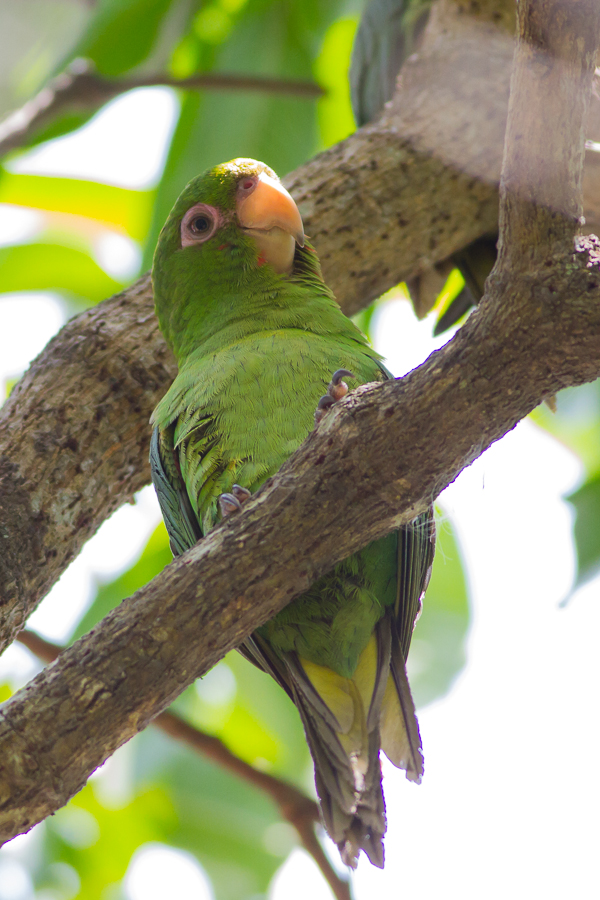
After the parakeets, we stopped in town (which one????) for reasons I forget. While the bus was parked we found a large and still unidentified lizard sunning itself in a tree:
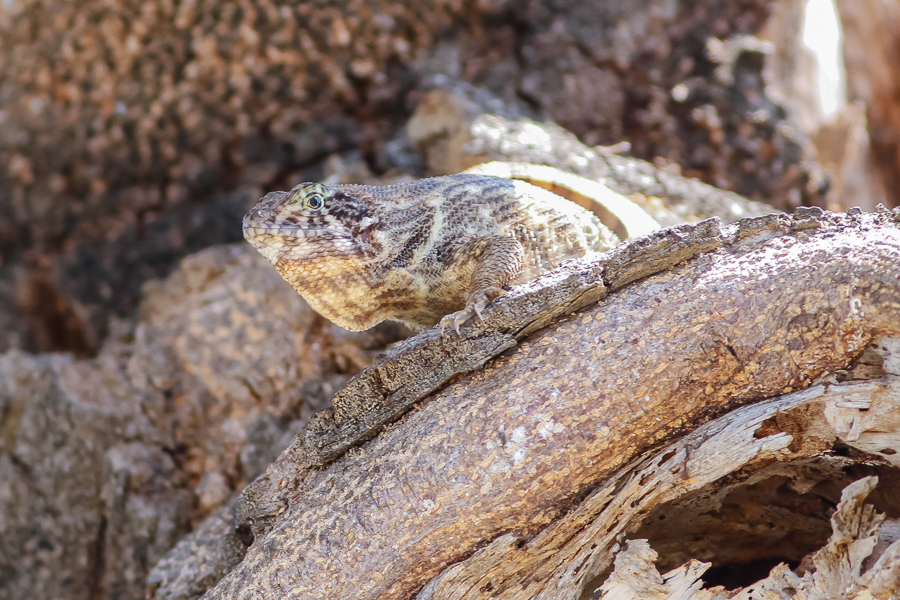
(We had maybe 5 total species of lizard out of 60+ or so possible on the trip.)
We had lunch at a nice restaurant near a swimming hole. Then we visited a small local natural history museum. As was not uncommon on this trip there’d been some confusion about when and whether we were coming, and the museum was closed. But Mileydis Blanco, the naturalist who was supposed to meet us was eventually located and we did get to visit. After the museum, we drove off with Mileydis and Frank Mendino, the Director of the Parque Nacional Cienaga de Zapata to another road that we’re told is underwater during the rainy season, but is currently dry. (Given that GPS devices are prohibited in Cuba, I don’t speak Spanish, and Google Street View hasn’t yet mapped Cuba, I can’t really give precise locations of most of these places) to look for Stygian Owl. We didn’t find Stygian Owl but we did find #828 Greater Antillean Nightjar:

(or perhaps, Cuban Nightjar. There’s some dispute about whether this bird and the Hispaniolan Nightjar form one species or two.) This is a very camouflaged bird, and incredibly hard to find and spot. That’s great, but next we see something even better, #829, not one but two Cuban Pygmy Owls, this time, fortunately, without needing to knock them out of their nests.
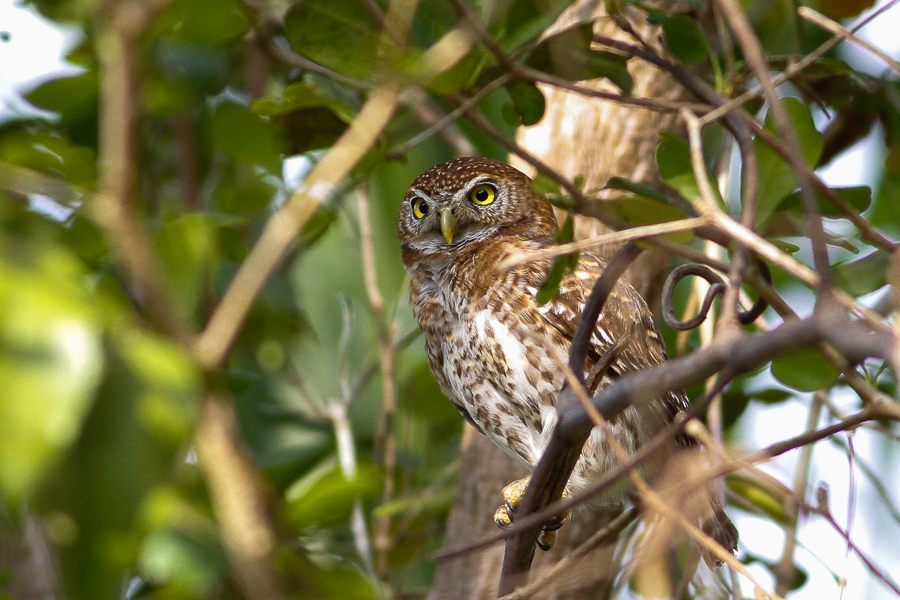
Dinner was at a Parador. The food was excellent, though it ran much later than I would have liked. When we have to get up early in the morning I’d rather worse food that’s quicker so we can get to bed sooner. As is, I’ll be lucky to have six hours of sleep before our 5:00 AM wakeup call, especially given that Cuba switches to daylight savings time tonight and we lose an hour.
